The Intel SSD 320 Review: 25nm G3 is Finally Here
by Anand Lal Shimpi on March 28, 2011 11:08 AM EST- Posted in
- IT Computing
- Storage
- SSDs
- Intel
- Intel SSD 320
It's called the Intel SSD 320, but the part number should give away just what we're looking at here:
This is the long awaited third generation Intel based SSD. This is the G3. And at this point it's around 6 months late.
Back then it was simply called the Postville Refresh on Intel's roadmaps (Postville was the 34nm Intel X25-M G2). It would use 25nm Intel NAND, feature improved performance and full disk encryption - all behind a 3Gbps SATA interface.
When I spoke with Intel about the drive last year, all indications pointed to it being faster than drives based on SandForce's SF-1200 controller. And it is:
| Intel SSD 320 300GB vs. Corsair Force F120 | ||||
| AT Storage Bench 2011 (Heavy) | AT Storage Bench 2011 (Light) | |||
| Corsair Force F120 | 120.1 MB/s | 155.9 MB/s | ||
| Intel SSD 320 300GB | 132.8 MB/s | 161.7 MB/s | ||
Without turning to any real time compression/deduplication techniques, Intel has built a drive that's faster than the SF-1200. You also get that famed Intel SSD reliability:
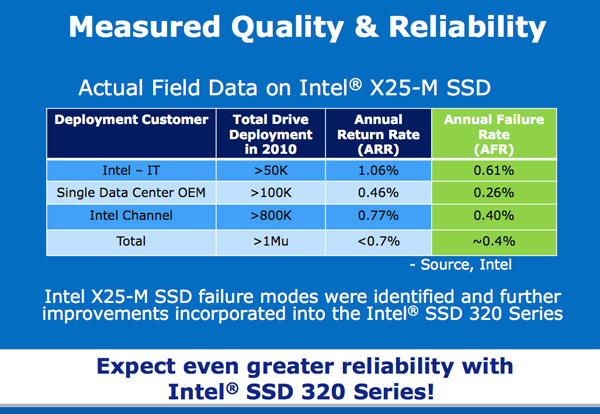
There's just one issue. The SF-1200 was the king of 2010. This year is shaping up to be all about the SF-2200 and the G3 isn't quite as competitive there. Intel realized this as well and thus we got the Intel SSD 510 to address the high performance market. Intel claims the 510 should have the same failure rate as the 34nm X25-M G2 at ~0.6% per year.
The Intel SSD 320 by comparison is aimed at the mainstream market. Remember that's what the M in X25-M always stood for to begin with. As a result we get lower pricing:
| Intel SSD Comparison | ||||||||||||
| X25-M G2 160GB | Intel SSD 320 40GB | Intel SSD 320 80GB | Intel SSD 320 120GB | Intel SSD 320 160GB | Intel SSD 320 300GB | Intel SSD 320 600GB | SSD 510 120GB | SSD 510 250GB | ||||
| User Capacity | 149GB | 37GB | 74GB | 111GB | 149GB | 279GB | 558GB | 111GB | 232GB | |||
| Random Read Performance | Up to 35K IOPS | Up to 30K IOPS | Up to 38K IOPS | Up to 38K IOPS | Up to 39K IOPS | Up to 39.5K IOPS | Up to 39.5K IOPS | Up to 20K IOPS | Up to 20K IOPS | |||
| Random Write Performance | Up to 8.6K IOPS | Up to 3.7K IOPS | Up to 10K IOPS | Up to 14K IOPS | Up to 21K IOPS | Up to 23K IOPS | Up to 23K IOPS | Up to 8K IOPS | Up to 8K IOPS | |||
| Sequential Read Performance | Up to 250MB/s | Up to 200MB/s | Up to 270MB/s | Up to 400MB/s (6Gbps) | Up to 500MB/s (6Gbps) | |||||||
| Sequential Write Performance | Up to 100MB/s | Up to 45MB/s | Up to 90MB/s | Up to 130MB/s | Up to 165MB/s | Up to 205MB/s | Up to 220MB/s | Up to 210MB/s (6Gbps) | Up to 315MB/s (6Gbps) | |||
| Price | $404 | $89 | $159 | $209 | $289 | $529 | $1069 | $284 | $584 | |||
It's still early in the 25nm ramp, but the 25nm Intel SSD 320 is cheaper than the 34nm Intel SSD 510. The only issue is that OCZ is very competitive with its pricing as well and compared to the Vertex 2, Intel's SSD 320 isn't really any cheaper. Intel likes to maintain its 65% profit margins so even though it makes the NAND and the controller in the 320, we're unlikely to see these drives drop below competitive pricing.
Intel expects the 25nm SSD 320 to be even more reliable than the 510 or X25-M.
The Same Controller
The Intel SSD 320, like the 310 and X25-M before it, uses an Intel branded controller. Opening up the 320 reveals a near identical controller to what we saw in the 34nm X25-M G2 housing:
You'll notice the part number is identical to 2009's X25-M G2 controller. In fact, it's the same controller. Apparently the G2 controller had a number of features on-die, but not implemented in firmware. Things like full disk encryption and NAND redundancy never made it out in G2 but are here in the 320 all thanks to new firmware. And no, G2 owners aren't getting it.
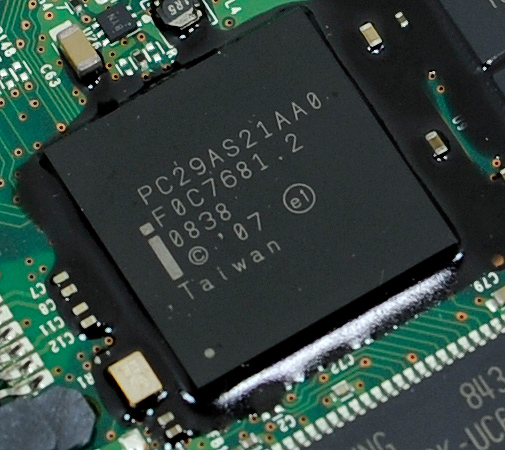
Intel's X25-M G1 Controller
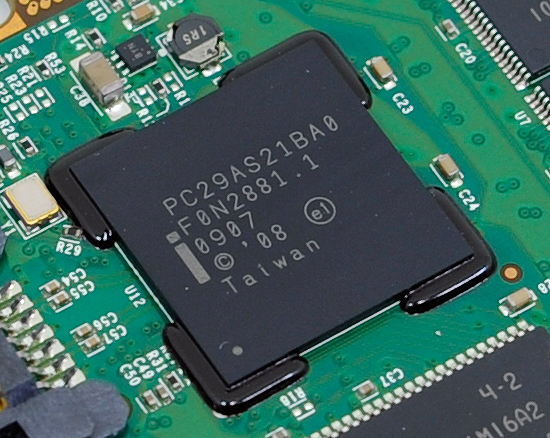
Intel's X25-M G2 Controller
Since the controller hasn't changed, the basic architecture of the SSD hasn't changed either. Intel still doesn't store any user data in its external DRAM cache and there's still a 256KB on-die SRAM.
Next to the Intel controller is a 64MB 166MHz SDRAM device, now made by Hynix. You'll notice that the DRAM chip is a lot smaller than what we've seen in previous X25-M generations, despite growing in capacity. Intel actually turned to mobile SDRAM for use in the SSD 320 to help save on power. While the X25-M G1 and G2 both used a conventional 3.3V SDRAM device, Intel moved to a 1.8V mobile SDRAM chip with the 320.
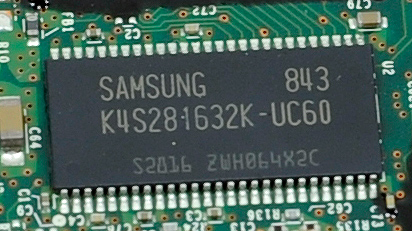
Intel X25-M G1: 16MB 166MHz SDRAM
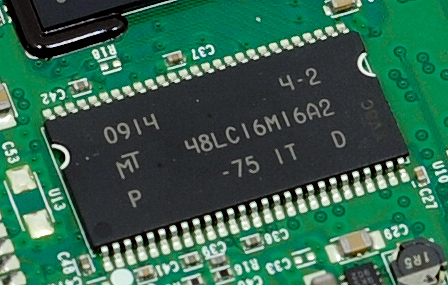
Intel X25-M G2: 32MB 133MHz SDRAM
Intel always prided itself on not storing any user data in its DRAM cache. The external DRAM is only used to cache mapping tables and serve as the controller's scratchpad. In the event of a sudden loss of power, Intel only has to commit whatever data it has in its SRAM to NAND. To minimize the amount of data loss in the event of a sudden power failure, Intel outfitted the SSD 320 with an array of six 470µF capacitors in parallel.
We've seen large capacitors on SSDs before, primarily the enterprise SandForce drives that boast a 0.09F supercap. Intel claims that for its design a single large capacitor isn't necessary given the minimal amount of data that's cached. It further claims that an array of multiple capacitors in parallel allows for much better reliability - if one capacitor fails the array is still useful (vs. a single point of failure in the case of the supercap).



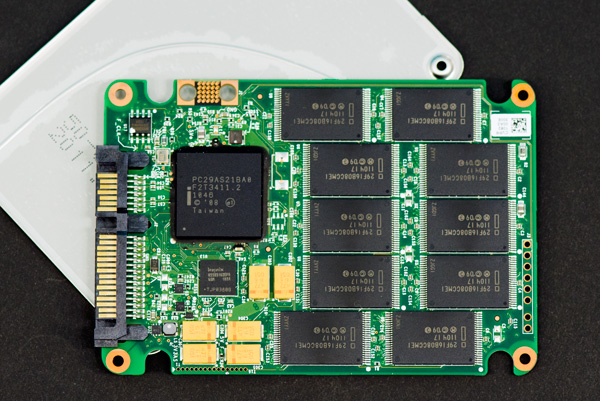
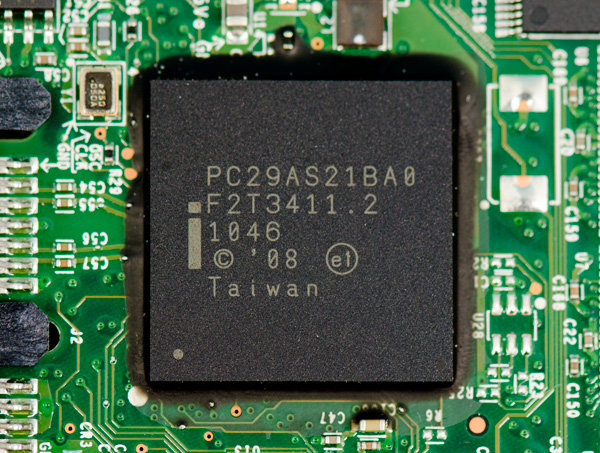
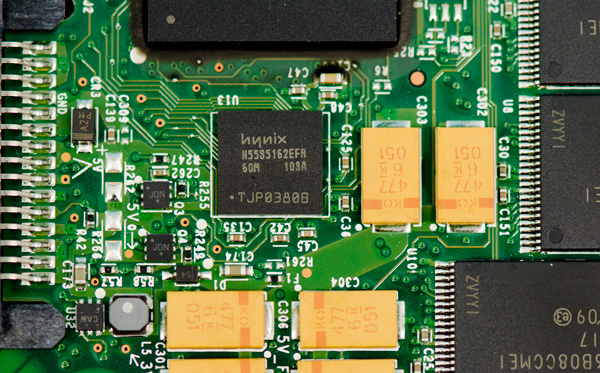









194 Comments
View All Comments
jwilliams4200 - Wednesday, March 30, 2011 - link
More OCZ spin doctoring. I was talking about using the drive heavily in a average consumer manner. For example, running CDM a couple times. The notorious Sandforce flaw causes the write speed of the SSD to slow down. No where is that flaw documented, so it is really worse than just a design flaw, it is a bug. If it were a known design flaw, there should be something in the spec sheet stating under what conditions the write speed of the drive will slow down. But there is nothing in the official specifications about that notorious Sandforce bug.sean.crees - Wednesday, March 30, 2011 - link
And no other companies have undocumented issues?How about my first gen Intel SSD's that now run at 1/10th their rated speeds? Where was it documented that this would happen to me?
So by your reasoning we should toss all Intel SSD's out of the window now right?
jwilliams4200 - Wednesday, March 30, 2011 - link
Intel G1 SSDs do not run at one-tenth their rated speed. There was a slowdown bug, perhaps a factor of two, but Intel long since fixed that with a firmware update.kmmatney - Wednesday, March 30, 2011 - link
Having several each of Intel and OCZ Agility SSDs, I can tell you that Intel's garbage collection is better, especially in first generation SSDs. I also have an Intel 80GB G1, and is is a little slower than new, but it hasn't slown down nearly as much as some of the OCZ drives I have do. Theya re all still much faster than spindle hard drives. I really do wish that Intel would at least enable manual TRIM of the G1 drives with the SSD Toolbox - but at least the grabage collection is very good.Frallan - Tuesday, March 29, 2011 - link
Im a happy Intel G2 user today but my 160 GB is running out bc of bl**dy Steam and their weekend/holiday offers. I have waited for the nexty generation of the Inteldrives bc of my experience with the G2 but with this they are 30% to expensive or 50% to slow.
Intel has failed in either pricing since this drive is a valuedrive or in execution since this is a slow drive. A year ago I would have stood in line allready but now it seems as if Ill have to go with the SandForce.
Just my 0.02 USD
/F
fackamato - Tuesday, March 29, 2011 - link
Same here. I also have the G2 160GB (good price on eBay almost a year ago). But the next one will not be this G3 drive, most likely something Sandforce.marraco - Tuesday, March 29, 2011 - link
Both the Intel 320 300GB and Intel 510 250GB are easily destroyed on price and/or capacity and/or performance by RAID 0 of Intel 320 40GB, 80GB, or Intel 510 120GB (in RAID 0 of 2, 3, or 4 units).I would only recommend Intel 320 80GB or Intel 510 120GB in different RAID 0 setups, but they were not tested.
Given the scalability of SSD units, the price/performance ratio is one of the more important aspects of SSD reviews. I wish Anandtech were giving more attention to the best price/performance in RAID 0.
NCM - Tuesday, March 29, 2011 - link
Remember what the zero in Raid 0 denotes...NCM - Tuesday, March 29, 2011 - link
...It's the amount of data you'll have left if any one member of the array fails.marraco - Wednesday, March 30, 2011 - link
I don't care, since I don't store data on SSD, and I have cheap terabytes of data to automatically store periodic images.